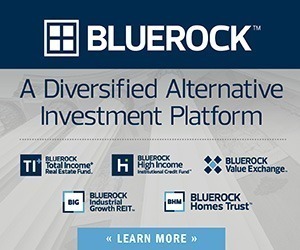What High Inflation and Higher Interest Rates Will Mean for Commercial Real Estate
April 13, 2022 | James Sprow | Blue Vault
U.S. inflation hit a 40-year high at 8.5% in March according to the Labor Department’s announcement on April 12. There have been six straight months of inflation above 6%, far above the Fed’s average 2% target. Money managers expect the core inflation rate, that removes volatile food and energy costs from the CPI, which rose 0.3% in March, to influence the Fed’s decision at its May meeting to increase interest rates by a half-percentage point. The futures market for Federal funds shows a nearly 90% probability of that rate rise. Fed Governor Lael Brainard says, “Inflation is too high. Getting inflation down is to be our most important task.”
How does the prospect of higher interest rates and continuing historically high inflation affect the value of commercial real estate? While these two factors alone don’t determine the direction of commercial real estate values, they certainly play a large role. Looking at today’s commercial real estate environment, we also must keep in mind other important variables such as current occupancy rates, future additions to the stock of real estate assets, and the landlord’s ability to raise rents. These vary across the different commercial real estate asset types, meaning high inflation and rising interest rates will have different impacts depending on the types of assets.
Generally, real estate sectors that have short-term leases, such as multifamily and self-storage, can raise rents to keep up with inflation. If occupancy rates remain high, new rental agreements can be signed at incrementally higher rates. With the cost of first-time home ownership increasing with 10-year rates moving up, multifamily occupancies should remain high as prospective home buyers are squeezed out of the market. New construction of single-family homes has lagged demand for years, and the relative shortage of supply will keep many renters renting. REITs have shown increasing interest in assembling portfolios of single-family rentals, capitalizing on the shortage of affordable housing for working-class buyers, and the ability to raise rents. Self-storage properties have the added flexibility of month-to-month rental terms at adjustable rates. REITs have been adding portfolios of self-storage properties, recognizing the advantages of the asset class as demographic trends continue to favor suburban migration, downsizing and Americans’ propensity to hang on to their “stuff.”
On the other end of the spectrum regarding owners’ coping with higher inflation rates and higher interest rates, office lease expirations are going to be problematic. A record amount of U.S. office space is hitting the market this year, putting property owners in a bind and threatening to leave banks and other lenders stuck with more troubled loans, according to the Wall Street Journal. The effects of the COVID-19 pandemic, with more office workers staying home or using a hybrid approach to office work, more tenants are shrinking their office space needs. The WSJ reports that 243 million square feet of U.S. office space will have leases expiring in 2022, the most office space to become available since JLL began tracking the data in 2015. This represents a 40% increase since 2018. The office vacancy rate is up to 12.2%, up from 9.6% at the end of 2019. Green Street estimates that hybrid work will cause a 15% drop in office space demand.
According to Trepp Inc., about $1.1 trillion of loans backed by office buildings are outstanding and $320 million of those loans are maturing this year and next. Quoting Matthew Anderson at Trepp in the WSJ, the combination of rising interest rates, lower occupancy and a mountain of debt coming due “could be a triple whammy” for building owners.
According to Marcus & Millichap’s recent survey, investor sentiment has fully recovered from the Pandemic and is at its highest level since 2015. Investors’ top concerns are higher interest rates and inflation. With the cost of capital increasing along with higher interest rates, investors are telling Marcus & Millichap that a 150 bps increase in rates would cause 46% of investors to buy less real estate, and if there is a 200-bps rise, 63% of investors would buy less property. According to the Fed’s plans to raise rates seven times in 2022, that would mean a 175% rise in rates. Investors that are planning to add to their real estate portfolios may want to act soon, before the Fed’s plans materialize in higher lending rates.
Sources: S&P Capital IQ, Marcus & Millichap, Wall Street Journal











